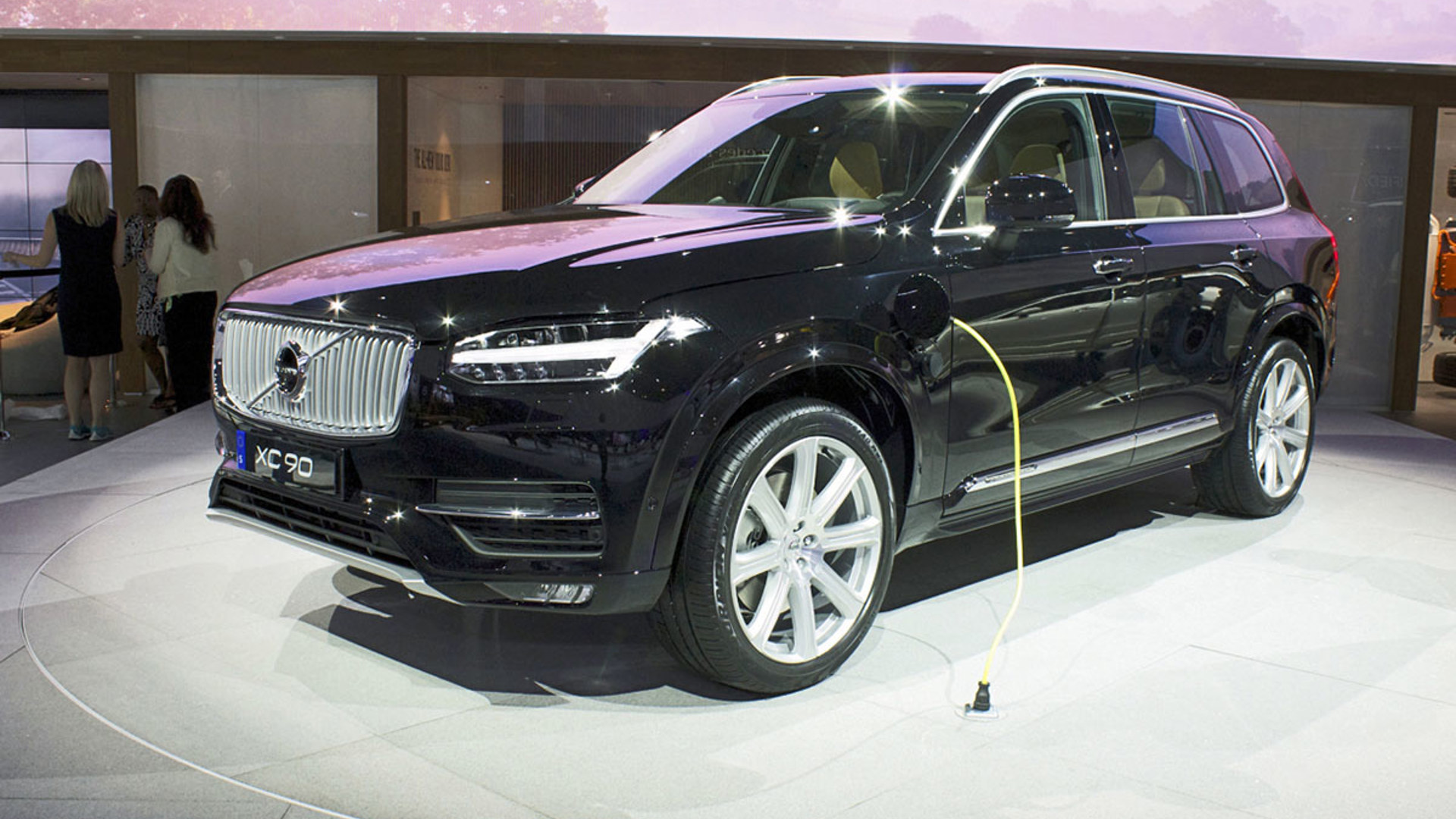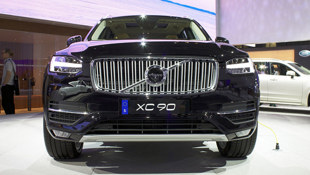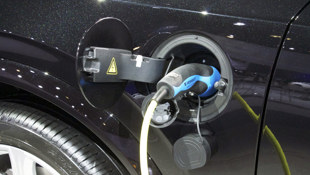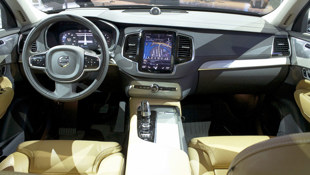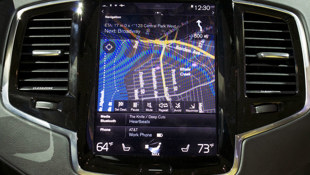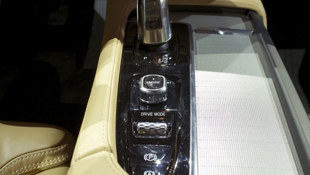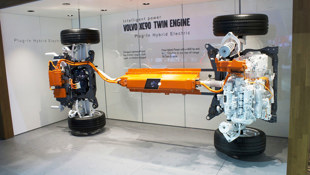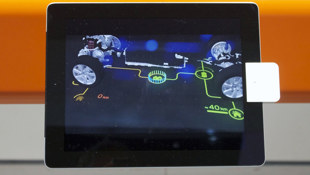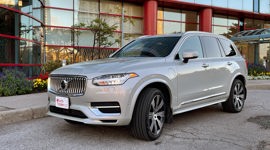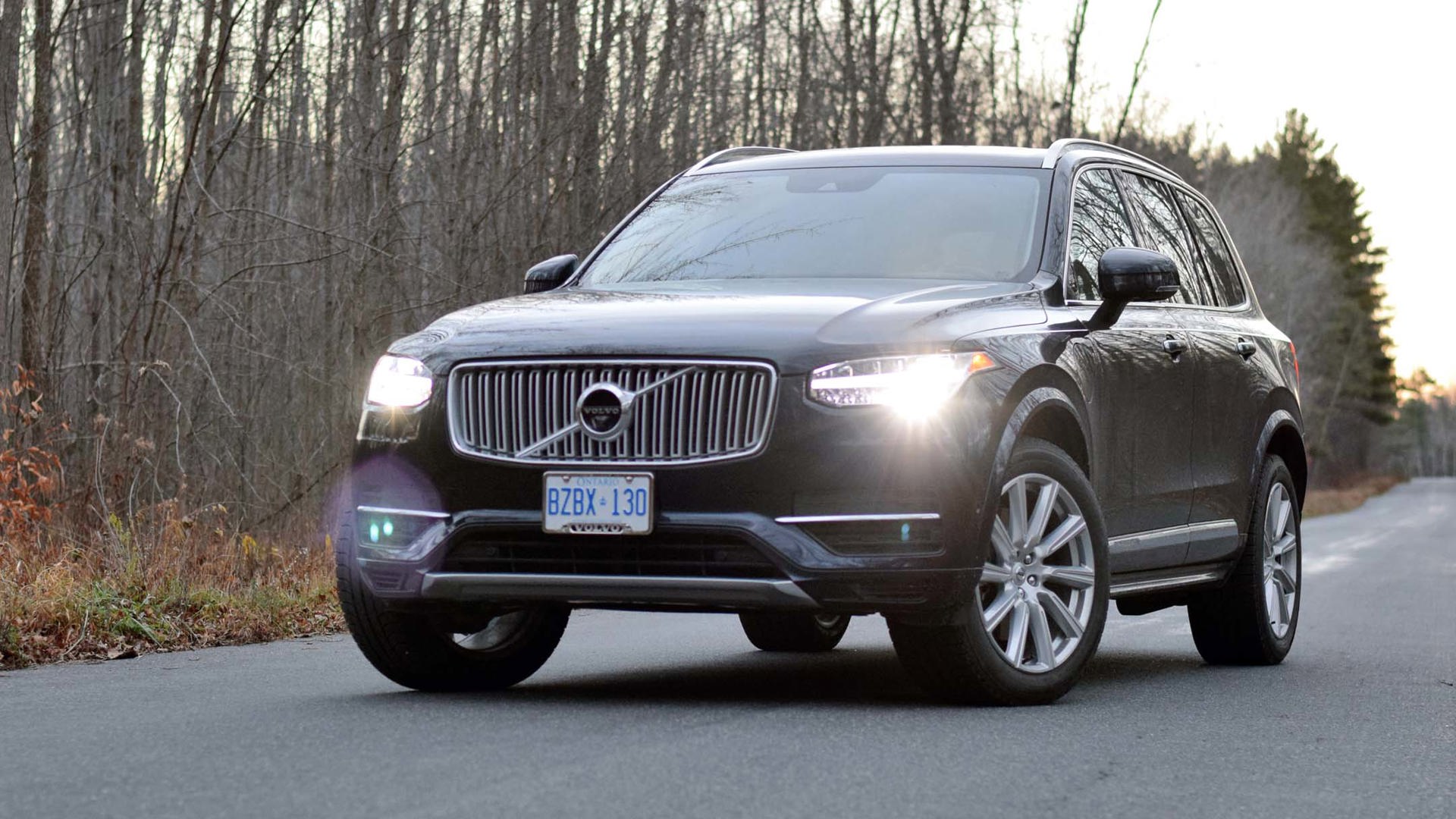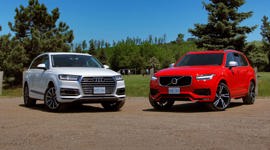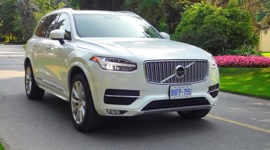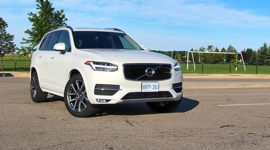With much fanfare about the excellence of Swedish design (its panoramic sunroof was likened to the light in a Swedish living room), Volvo showed off its seven-seat SUV in Los Angeles today. This is a big deal for the company – those buyers who once favoured the boxy wagons of the past have pretty much all moved on to Subaru Outbacks and the like. If Volvo wants to win over new luxury buyers, they have to offer something different.
At first bork, it's a good looking lump of Scandinavian sheet metal.
The new T-shaped lighting elements in the headlights look a bit like miniature Mjölnir – no accident, as Volvo actually refers to these as “Thor's Hammer” daytime running lights. The new grille is also larger and wider, something you can expect to see throughout the Volvo range in coming years. Wheel sizes will be offered in up to 22-inch diameter, as in this Inscription-trim top-level car.
On the inside, the XC90 eschews the cockpit-like layout of some Teutonic competition, and aims for comfort first. There are little details to draw the eye: the gear selector, for instance, is cut from crystal supplied by Swedish glassmaker Orrefors, and the drive mode selector has a brilliant, multifaceted look. The rest of the interior has well-formed, very soft leather, and the same useful three-row layout that made the previous XC90 a hit with families.
Inside, as with all three-row crossovers, there's not much trunk space with all the seats deployed. However, with the third row flat you've got plenty of room, and Volvo's clever little cargo divider is very useful here for keeping groceries contained and within reach. The sliding access for the third row works well, with a single-handed operation that should be easy enough for kid-carrying parents working one-handed.
Under the XC90's long hood is a twin-charged (super and turbo) 2.0L four-cylinder, which can be paired with a hybrid drive for a total of 400 hp and 472 lb-ft of torque. Impressive stuff, and it makes the XC90 the first three-row, seven seat crossover with plug-in capability. Volvo's twin-charge system has been impressing in the S60 sedan, where it's dubbed the T6 E-drive. A similar 316-hp double-forced-induction engine is available as the base engine in the XC90, which will likely be the volume sales leader.
However, there's also a T8 twin-drive option, one that's quite unique. Early on, Volvo claimed that they had engineered their new super-turbo-four to work with electrified drivetrain components for easy hybridization. The resulting plug-in hybrid XC90 T8 doesn't lose anything in the way of cargo-carrying capacity, but gains around 40 kilometres of electric-only range thanks to an 80-hp electric motor. Mileage improvements over the former Yamaha-designed V8 should be immense, similar to the economy shown by the Cayenne S E-hybrid. Likely the Volvo will be tuned more for comfort than the sportier Porsche, but the Swede's third row seating and extra cargo-capacity make it a unique proposition, countering Mercedes-Benz’s three-row GL 350 Bluetec, which embraces the inherent efficiencies and torque of diesel.
On the safety side, there's an automated braking system and adaptive cruise control that operates steering, acceleration, and braking for nearly fully autonomous driving. The former can prevent drivers from turning left in front of oncoming cars at intersections. Also unique is a deformable portion of the seat that flexes to protect passengers' spines on vertical impact. Volvo's complete brace of auto-braking technologies now extends to detecting pedestrians and cyclists. As with all automated technologies like these, one hopes you never have to try them out.
Volvo intends the XC90 to lead the way for its brand, and has spent considerable funds on its research and development. Certainly there's a lot riding on this car, but it looks promising. The technology and appointments are enough to win new fans, and as for traditional Volvo enthusiasts, there's always a Namaste bumper sticker.
